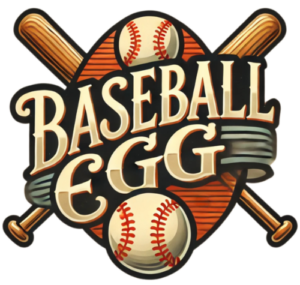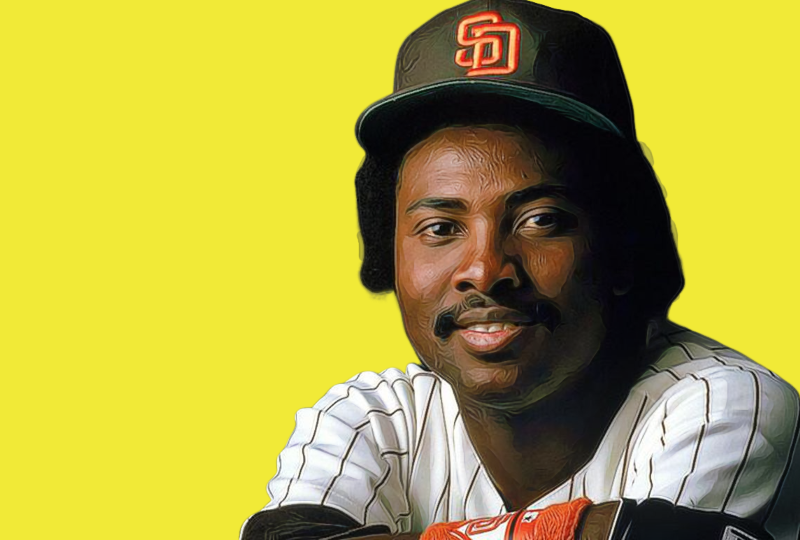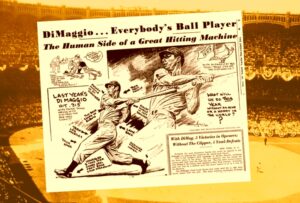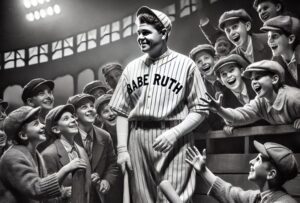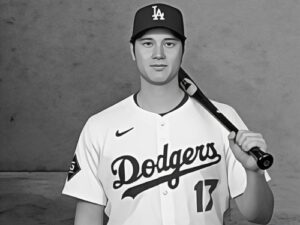Sadly, we lost Hall of Fame outfielder Tony Gwynn this week to cancer. Gwynn was without question the best pure hitter in the game of baseball in the 1980s and 1990s. The numbers he put up are staggering, especially considering he played in an era that was increasingly dominated by big swings and steroid home runs.
Here are nine incredible facts and stats from the career of Tony Gwynn.
1. No one close to his .338 career batting average since the 1930s
Gwynn’s career batting mark was .338, the highest mark by any player who started his career after 1939. The closest anyone has come after World War II are Wade Boggs and Rod Carew at .328, a full 10 points behind Gwynn.
How incredible was Gwynn’s career batting mark? He could have stuck around the big leagues and gone 0-for-1172 and still had a .300 career batting average.
2. Gwynn owned the best pitcher of his generation
The pitcher that Gwynn faced most often was Greg Maddux, which makes sense since the two were in the National League together for 15 seasons. Maddux was a tough competitor, earning the nickname “Mad Dog” for his intense focus. He dazzled batters with his precision and command. With Maddux it always seemed that batters were either being fooled as they watched a pitch nip the corner of the plate, or they were getting a bad swing on a pitch that dove away from their bat at the last second. Maddux won four Cy Young awards and ranks as one of the ten greatest pitchers in history.
But Tony Gwynn loved facing him.
In 35 games against Maddux, Gwynn hit a Ty Cobb-like .429. He was 39-for-91 off the right-hander, with eight doubles and a triple.
But here’s probably the most amazing thing: Maddux never struck Gwynn out. Not ever, not once.
In 103 plate appearances, Gwynn put the ball in play 93 times and walked 10 times. He was intentionally walked by Maddux six times, the most intentional walks that Gwynn received from any enemy pitcher. Maddux is a Hall of Famer and he struck out more than 3,000 batters in his career, but the one batter he faced the most often — San Diego’s #19 — never fanned against him.
“No hitter can tell the difference in speed of different pitches,” Maddux told Thomas Boswell, “except that goddamned Tony Gwynn.”
3. Southpaws? No problem
Most players have a disadvantage when they are facing pitchers of the same stripe as them. Right-handed batters hit worse against righties and left-handed batters hit worse against lefties. As they age, batters’ platoon splits usually get more pronounced. But not with Gwynn. Yes, he hit better against RHP in his career (.345 as opposed to .325 against southpaws), but as Gwynn got older, he got better, not worse, at hitting left-handers.
From 1993-2001, the last nine years of his career, when he was 33-41 years old, Gwynn hit .349 against left-handed pitching. While most left-handed batters are declining and being rested against southpaws in their twilight years, Gwynn was punishing them.
4. Hits in bunches: 45 games with at least four hits
In his 20 seasons, Gwynn posted 45 games in which he had at least four hits: 35 with four hits, nine with five hits, and one with six hits. His 45 games with at least four hits is 10th all-time (since 1954), and ranks fourth among left-handed batters behind Wade Boggs, George Brett, and Rod Carew. In addition, Gwynn’s nine five-hit games rank second all-time to Pete Rose, who had 10.
In 1993, Gwynn had a stellar year when he had three five-hit games and his lone six-hit game. That six-hit game deserves closer examination.
It occurred on August 4, 1993, against the Giants on a weekday evening at Jack Murphy Stadium in San Diego. Gwynn doubled in the first off Greg Brummett (who was making one of his only 13 starts in the major leagues). In the third inning, Gwynn singled to right. In the fifth inning he lined sharply into the glove of first baseman Will Clark. Another foot either way and it would have been a hit. In the seventh, Gwynn got his third hit, a double to left field off Dave Righetti. In a high-scoring game, he was back up in the eighth, lining a single to right off Jeff Brantley. That was hit #4 and it helped spark a three-run rally that helped the Padres tie the score 10-10. The game went into extra innings and Gwynn singled in the tenth, but the Pads were unable to score the winning run. In the twelfth, San Diego put together a rally, Gwynn lining a single to center for his sixth hit of the game to send the winning run to third base. A few moments later, Pedro Martinez (not THAT Pedro, the other Pedro Martinez), laid down a suicide squeeze that scored Ricky Gutierrez with the winning run from third. His 6-for-7 performance raised Gwynn’s average to .357, though he would lose the batting title that season to Andres Galarraga, who batted .370 for Colorado.
Gwynn’s four games of five hits or more in 1993 are tied with Ichiro Suzuki (2004) for the most by one player in a season since 1970.
5. Dominated the competition with the bat
We all know that batting average is not the only way (or even the best way) to measure a hitter’s effectiveness. But when a player is so clearly head-and-shoulders above the rest of his peers in batting it’s hard not to be impressed. In his prime, when he was really at his best hitting the baseball, Gwynn was as dominant in batting as anyone since Ty Cobb in the Deadball Era.
From 1993 to 1997, his best five-year stretch, when he won four batting titles, Gwynn hit .368, a mark that was more than 30 points ahead of the next closest batter, Mike Piazza (.337).
During his career, Tony won batting titles by 32 points (1987), 30 points (1984), 28 points (1994), 22 points (1995), and 17 points (1996).
6. Rarely went long without a hit
On April 30, 1996, three San Francisco pitchers held Gwynn hitless. It was the third straight game he failed to get a hit (even though he had been on fire that month and his batting average was still at .403 after the three hitless games). That was the first time in THREE YEARS that Gwynn had gone more than two games without a hit, and the first time in FIVE YEARS that he had gone more than 11 at-bats without getting a base hit.
Think about that: for five years from July of 1991 to April 1996, Gwynn never had an 0-for-12 at any time. That’s how you maintain an astronomical batting average year after year.
7. Only averaged 29 strikeouts a season
It was very, very hard to fool Tony Gwynn. If you were going to do it you had to get him the first time you saw him (through lack of unfamiliarity) or by having a trick pitch of some sort. Otherwise, you weren’t going to strike him out. In 20 seasons he struck out a total of 434 times — most hitters today strike out that much in three seasons. Even in his era, Gwynn’s contact rate was far and away the best of the great hitters. In 1995 he went 35 games without striking out. Gwynn also had incredible success against many of the best strikeout pitchers.
As we outlined in #2 above, Gwynn tore apart Greg Maddux to the tune of a .429 career average and he NEVER struck out against the Hall of Fame hurler. But Gwynn also extended that success to other fine pitchers, such as Maddux’s teammate John Smoltz. Gwynn hit a blistering .444 off Smoltz and only struck out once against the hard thrower. Only once. He wasn’t just slapping the ball either, Gwynn had eight doubles, two triples, and two home runs off Smoltz. Tom Glavine, the other great pitcher in Atlanta’s rotation during Gwynn’s day, only struck out Tony twice. So, as a result, in 287 plate appearances against Hall of Famers Maddux/Glavine/Smoltz, Gwynn only struck out three times while hitting .381.
Of the players in the 3,000-hit club, only Paul Waner struck out less frequently.
Mike Scott, he of the split-fingered fastball, was one of the best strikeout pitchers of the 1980s, and he’s the pitcher that Gwynn faced the most after Maddux and Glavine. Scott only fanned Tony three times in 95 matchups. In 36 pitcher/batter battles, Pedro Martinez never struck out Gwynn. Mike Hampton, a hard-throwing lefty who finished second in Cy Young voting one season, faced Gwynn 38 times and never struck him out. Same with Joaquin Andujar, Rob Murphy, and Kevin Brown, all of whom battled Gwynn at least 25 times.
There were two strikeout specialists who got Gwynn on strikes more than a few times: Nolan Ryan and Dwight Gooden. Ryan faced Gwynn 67 times and fanned Tony nine times (the most by any pitcher), but Gwynn still managed to hit over .300 against The Express. Gooden used his fastball and curveball to keep Gwynn off-balance, actually holding Mr. Padre to a .243 mark in 77 matchups while fanning him six times. The only pitcher to strike out Gwynn three times in ONE game was Bob Welch, who sadly passed away last week.
In 2.440 career games, Gwynn struck out twice in a game only 34 times. He had 45 games of four or more hits, so it was more likely to see him get four hits than it was to see him strike out more than once.
And one final strikeout-related stat that blows the mind: Tony Gwynn hit .302 with two strikes on him. In the 30-plus years that stat has been tracked, the next-best batting average with two strikes is .260 by Wade Boggs, more than 40 points below Gwynn’s mark.
8. Gwynn was still hitting line drives in his late 30s
The great players are usually the ones who are able to maintain their skills later than their contemporaries. Gwynn certainly did that. In 1997 he was 37 years old but his bat hadn’t slowed down. It’s really hard to pick a period in one of Gwynn’s 20 seasons and say definitively that it was the hottest stretch of his career. There are so many great stretches, but amazingly in 1997, he got maybe as hot as he’s ever been with the stick for a long stretch of time, and he did it twice.
On May 19, 1997, Gwynn was hitting .368, not to shabby for sure. But he was about to really start heating up. The next day at home against the Dodgers, Gwynn went 3-for-3 with a pair of doubles off Ismael Valdez. That jump-started arguably the hottest 20-game streak of his career. He banged out three hits two nights later against the Dodgers, two more in each of his next two games against the Marlins, and he didn’t stop hitting, building a 20-game hitting streak that ran until June 10th. On May 27th, Tony went 4-for-5 against the Braves and lifted his average over .400. On the morning of June 11th his mark was at .409 after another three-hit game against St. Louis at Qualcomm Stadium the night before. In that game, Gwynn lined a two-run double in the bottom of the ninth off Dennis Eckersley to tie the game and send it to extra innings.
For the 20-game batting streak in May and June, Gwynn hit an incredible .494 (39-for-79) with a .534 on-base percentage. But Gwynn wasn’t done showing off his “old” bat. On June 21, Gwynn started a 19-game hitting streak in which he hit .429 with 36 hits and more power (he hit five homers). The streak lifted his batting average to .402 as late as July 14th.
For the eight-week period from mid-May to mid-July, Gwynn hit a sizzling .430 and collected at least one hit in 44 of 46 games. He collected 83 hits in the 46 games, and even had a hit in the one game he didn’t start, delivering a pinch-hit two-run single against the Astros on June 1st. Gwynn was hitting .390 as late as August 5, 1997, but cooled in late August and September and “settled” for a .372 average and his eighth batting title. He led the league with 220 hits, becoming the oldest player to do so.
9. The .400 hitter who wasn’t
In 1994, Gwynn had his best season at the plate. He hit .395 in April, .392 in May, .387 in June, and .370 in July. With the specter of a strike hanging over the game, he ramped it up in August, hitting .475 in the 10 games before the game was stopped due to the labor strife. His batting average stood at .394 and unfortunately, a run at .400 was one of the things lost when the season was cancelled.
Would Gwynn have hit .400 that season? We will never know, but he was hitting like a demon as the weather got warmer and he seemed to have as good a chance as any batter in several decades. In 1995 the baseball season was delayed and didn’t start until late April. As if to show everyone what they’d missed in the summer of ’94, Gwynn came out swinging a red-hot bat. He had at least two hits in his first five games and hit safely in his first twelve. On May 10, his batting average was .429, giving him a .400 mark over the last 130 games.
Gwynn hit .400 for a stretch as long as a season: from July 3, 1993 to May 9, 1995, he batted .403 over a 179-game stretch.
How great was Gwynn’s 1994 season? Jeff Bagwell hit .368 that year — the 13th highest batting average since 1961 — but he still finished 30 points behind Gwynn in the batting race!
